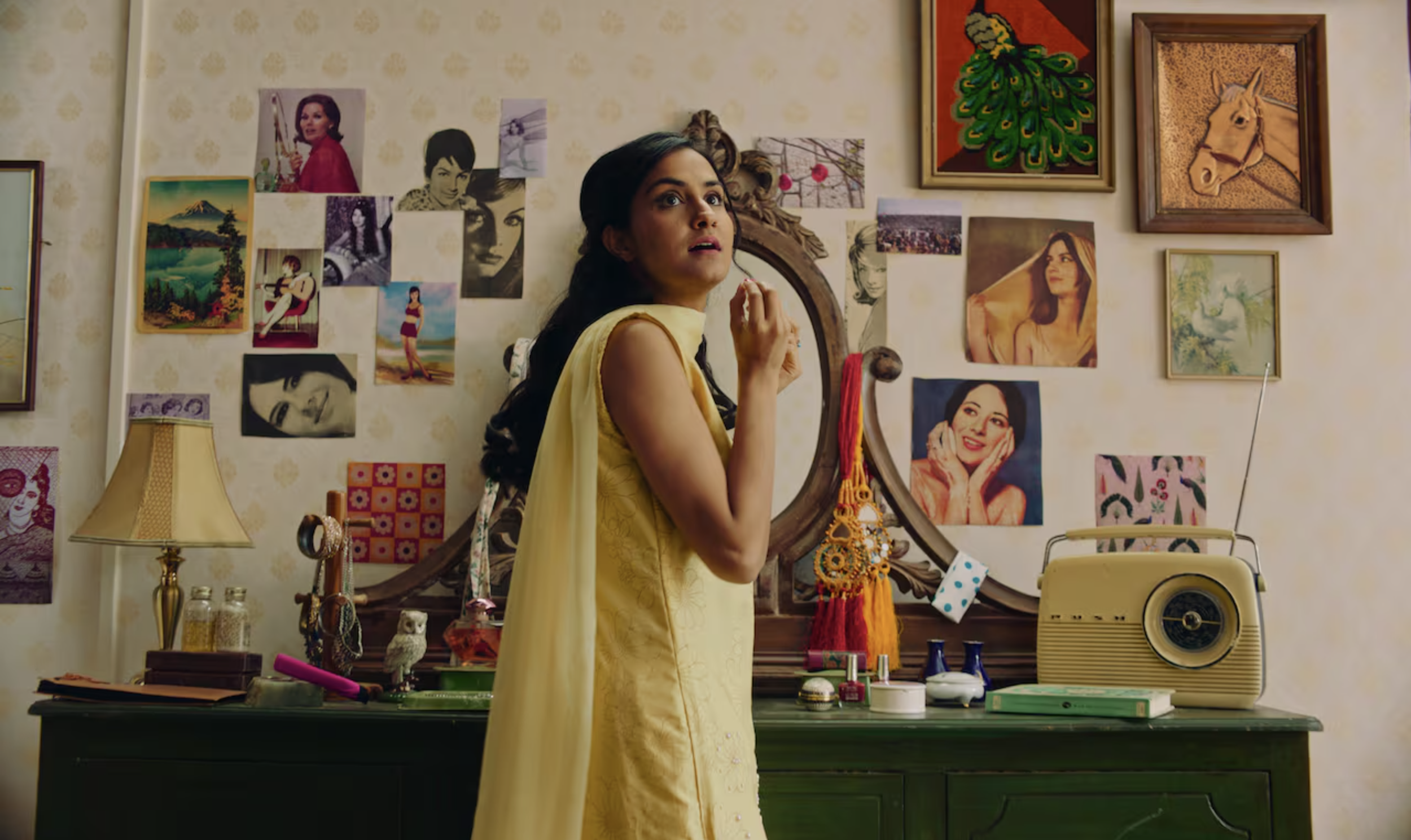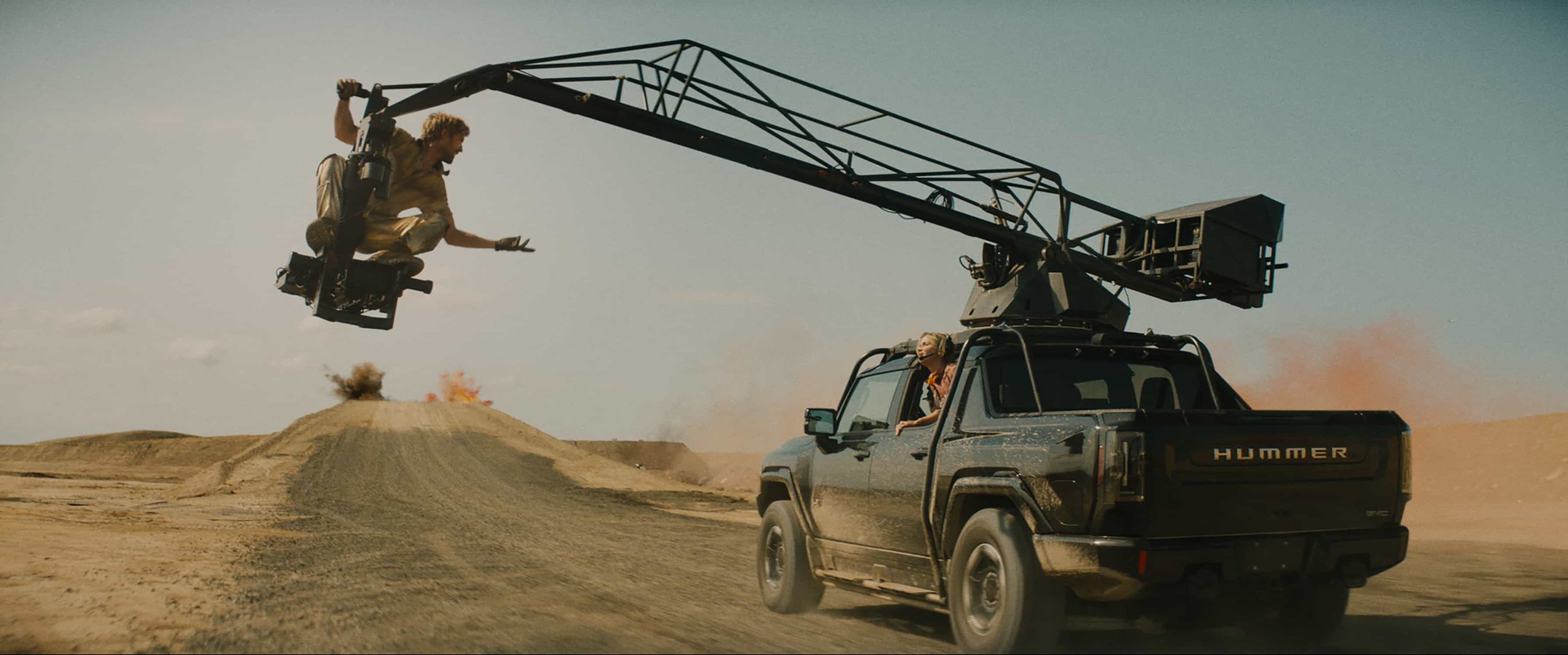SIFF Advance: STRESS POSITIONS
Directing: B+
Acting: B+
Writing: B+
Cinematography: B+
Editing: B-
It’s possible I might decide Stress Positions absolutely sticks the landing if I watch it, like, five more times. That’s not likely to happen so I don’t know what to tell you. Except, I suppose, that I feel like, in the end, its narrative conceit went way over my head.
It’s too bad. Director, co-writer, and costar Theda Hammel was at the SIFF screening I attended, and in the post-screening Q&A, she very quickly revealed herself to be whip smart, and ready to answer unusually incisive audience questions with surprising specifics of intention. It’s clear that nothing that happens in this film is an accident, and the intersecting narratives and changing points of view were deeply intentional. For all I know, Hammel could find this very review (I hope not) and deduce that I am an idiot who just didn’t get her art. In that case, she’d be half right.
For a “covid movie” (a pretty reductive way of referring to it, actually), there’s a lot going on here. It’s a movie contextualized by Millennials who came of age in between two era-defining catastrophes: 9/11 and, nineteen years later, the covid-19 pandemic. Hammel finds a way for her characters to refer to this directly by saying ignorant things about Bahlul (Qaher Harhash), the 19-year-old model recovering from a broken leg in the Brooklyn apartment basement of his White uncle Terry (John Early, giving perhaps the best performance I’ve seen him do in anything).
These relationships get sort of convoluted: Bahlul’s mother is Terry’s sister, but we never see her face, only blurry images from behind in flashbacks narrated by Bahlul. There’s a pointed image of her blond hair peaking out from under her head scarf, evidently after she emigrated to Morocco and had a child with a man there. We never fully meet the sister (Bahlul’s mom) or even see Bahlul’s father; we only meet Bahlul, a beautiful young man, often casually lounging around (recovering) in bed or on a couch shirtless, or sometimes in his underwear. This becomes a frequent topic of conversation among Terry’s friends, none of whom seem like great people, which Terry is understandably exasperated by, though his inclination to hide the young man from them, evidently for fear of them exoticizing him, is less understandable.
There’s a lot of voiceover narration in Stress Positions, divided between Bahlul, and Terry’s friend Karla, played by Theda Hammel. It’s relevant to note that both Hammel and the character she plays are trans women, and Karla comes over to the apartment and brings some influence on the impressionable Bahlul. Qaher Harhash is himself an actual model, incidentally, although I cannot find anything online to indicate his sexuality—he certainly read as “queer boy” to me onscreen, but that has no bearing on Harhash himself. Much is made among the characters that Bahlul is straight; whether he is also trans, it seems, Stress Positions leaves open for discussion.
There’s a kind of refreshing irreverence to Stress Positions, sometimes to the point that some might consider taboo. Hammel treats it all very casually, from when Karla says “Tell him your friend who used to be a man says hi,” to one exchange between two cisgender men in which one refers to all the “trannies” who live in the building. It would be a lot easier to get uncomfortable with that if not for the fact that a trans woman directed and wrote the film, notwithstanding a word now widely regarded as a slur being put into the mouth of a cisgender character.
There’s certainly something fun about this depiction of a group of people who have no particularly bigoted attitudes toward each other’s fluid differences of sexuality and gender (ignorance is another story), but are still all messy. They may have no fucks to give about matters that Boomers have spent decades giving themselves aneurysms over, but that doesn’t mean they know what the hell they’re talking about at any given time either. In particular, conversations about Bahlul being a brown person has all the White characters telling on themselves, not understanding the myriad nuances of the Muslim world, the Middle East, and where the two do or do not intersect.
This is especially the case with Terry, a character who provides by far the most comic entertainment, a guy who exudes and attracts chaos (all while Bahlul hangs out calmly in his leg cast), more than once throwing out his back when something startles him and he trips or falls in the kitchen while cooking. Terry is the guy who thinks of himself as a model progressive, while often betraying his own ignorance, particularly when it comes to his nephew’s multi-ethnic heritage. (A couple of funny scenes have characters, including Terry, queuing up a YouTube video called “What Is the Middle East?”)
Terry is also deeply paranoid about covid, this story unfolding in the summer of 2020—in Brooklyn, no less, where covid cases were catastrophic in a way few other places in the U.S. ever got. I have mixed feelings about Terry’s paranoia played as excess, because he actually has a point when he says, “We wouldn’t need a curfew if you all just stayed home.” Yet, he still lets Karla in when she comes to help after he throws his back out, and keeps bringing Coco, the weirdly voyeuristic landlady from upstairs (another trans woman, played by Rebecca F. Wright), inside to fix the Internet even though he’s constantly admonishing her to put her mask on.
There’s a curious element, an odd sort of vibe, about Stress Positions taking place during the height of the pandemic. There was a period where people clearly did not want obvious covid references in their entertainment, as they preferred to use that to escape from it. Now it’s four years on, and people are still getting covid, but it’s no longer the global catastrophe it once was. The audience at the screening last night seemed entertained by the comic references to an era we’re all glad is behind us, but I have no idea whether non-festival audiences will be as into it.
I haven’t even mentioned the fact that Terry has a husband, who has found a new man and served him divorce papers. We actually meet Leo (John Roberts) later in the film, at one of the “social distanced” parties held in the apartment backyard that is shockingly large for a New York City apartment. And his presence gets intertwined with Bahlul, who has already been narratively intertwined with Terry, and Karla, and Karla’s partner Vanessa (Amy Zimmer) who wrote a book in Karla’s voice—it’s a whole thing—and even, at lest in terms of narrative structure, with Ronald the GrubHub delivery guy (Faheem Ali), who himself intersects problematically with Karla.
I’d ask if you were able to follow all that, except it’s unclear to me if it even matters. I’ll tell you this: there are countless scenes in Stress Positions with crackling dialogue, well delivered, a sequence of conversations I could have listened to indefinitely, almost as if written by Richard Linklater if he were a messy queer Millennial. I really, really enjoyed the experience of this movie. I just didn’t quite understand the layers of turns it took in the end.
You might feel like Terry here by the time the movie ends.
Overall: B+



